
The small blue is a Palearctic butterfly in the family Lycaenidae. Despite its common name, it is not particularly blue. The male has some bluish suffusion at the base of its upper wings but is mostly dark brown like the female. The species can live in colonies of up to several hundred and in its caterpillar stage is cannibalistic.
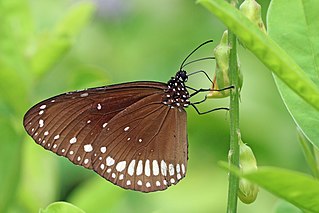
Euploea core, the common crow, is a common butterfly found in South Asia to Australia. In India it is also sometimes referred to as the common Indian crow, and in Australia as the Australian crow. It belongs to the crows and tigers subfamily Danainae.

Daphnis hypothous, the jade hawkmoth, is a moth of the family Sphingidae described by Pieter Cramer in 1780. It is known from Sri Lanka, southern and northern India, Nepal, Myanmar, southern China, Taiwan, Thailand, Malaysia, and Indonesia. It is a rare vagrant to the Western Palaearctic realm. During the last hundred years a number have been discovered within the Middle East and one was even found in Scotland late in the 20th century but this was probably imported as a pupa with cargo.

Zizina labradus, the common grass blue, grass blue, or clover blue, is a small Australian butterfly of the family Lycaenidae.
Zetona is a genus of butterflies in the family Lycaenidae. The single member of this genus, Zetona delospila, the clear-spotted blue or satin blue, is found in Australia in the northern part of the state of Western Australia, the northern parts of the Northern Territory and Queensland.
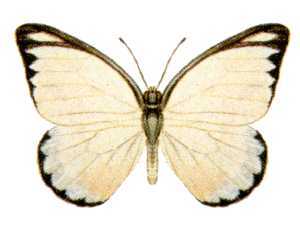
Appias ada, the rare albatross, is a butterfly of the family Pieridae. It is found on the Moluccas, New Guinea, Indonesia, Australia and the Solomon Islands.
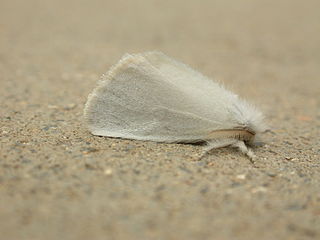
Acyphas semiochrea, the omnivorous tussock moth, is a moth of the subfamily Lymantriinae first described by Gottlieb August Wilhelm Herrich-Schäffer in 1855. It is found along most of the coast of Australia, including: New South Wales, Queensland, South Australia, Tasmania, Victoria and Western Australia.
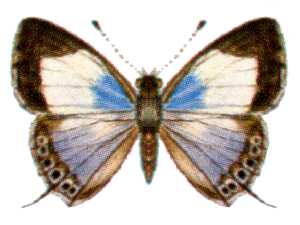
Jameela palmyra, the marbled blue, is a butterfly in the family Lycaenidae. It is found in along the coast of Australia, as well as in Indonesia, New Guinea and the Solomon Islands.

Candalides xanthospilos, the yellow-spot blue, is a species of butterfly of the family Lycaenidae. It is found in along the eastern coast of Australia, including Queensland, New South Wales and Victoria.
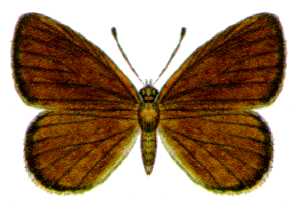
Candalides heathi, the rayed blue, is a species of butterfly of the family Lycaenidae. It is found in southern Australia, including South Australia, New South Wales and Victoria.

Candalides hyacinthina, the varied dusky-blue, is a species of butterfly of the family Lycaenidae. It is found along the east coast of Australia, including South Australia, New South Wales, Western Australia and Victoria.

Candalides cyprotus, the cyprotus blue or copper pencil-blue, is a species of butterfly of the family Lycaenidae. It is found along the east coast of Australia, including South Australia, New South Wales, Western Australia and Victoria.
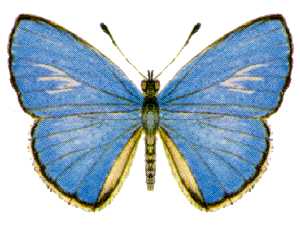
Candalides helenita, the shining pencil-blue, is a species of butterfly of the family Lycaenidae. It is found in Australia and Indonesia.

Candalides gilberti, the northern pencil-blue, is a species of butterfly of the family Lycaenidae. It is found in Australia in the Northern Territory and the north of Western Australia.

Hypolycaena phorbas is a butterfly of the family Lycaenidae. It is found in Waigeo, Biak, Roon Island, mainland New Guinea and various outlying islands as well as Australia.

Nacaduba biocellata, the double-spotted line blue, is a butterfly of the family Lycaenidae. It is found in Australia, Singapore, the New Hebrides, Sumba and Bali.
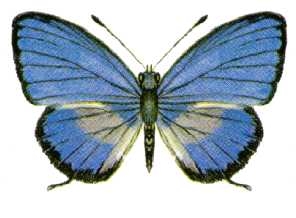
Nacaduba cyanea, the tailed green-banded line-blue, is a species of butterfly in the family Lycaenidae, and formerly considered a member of the genus Danis. It is found in the Indonesia, Papua New Guinea, the Solomon Islands and Australia (Queensland).

Psychonotis caelius, the small green banded blue, is a species of butterfly of the family Lycaenidae. It is found in New Guinea and adjacent islands and along the eastern coast of Australia.
Candalides margarita, or Margarita's blue, is a species of butterfly of the family Lycaenidae. It was described by Georg Semper in 1879. It is found in Australia and New Guinea.

Heteronympha cordace, the bright-eyed brown, is a brown colored butterfly endemic to Australia. It was described by Carl Geyer in 1832.
























